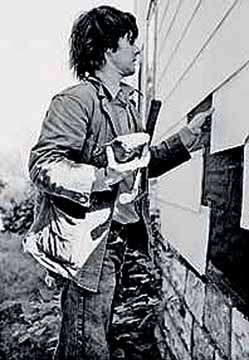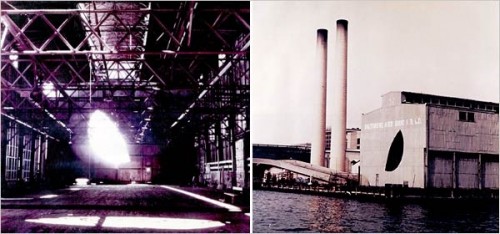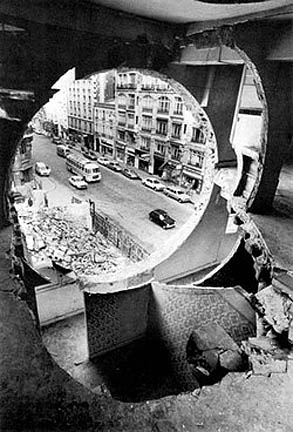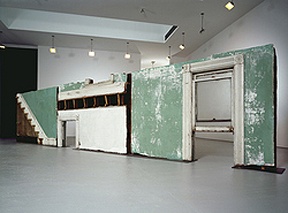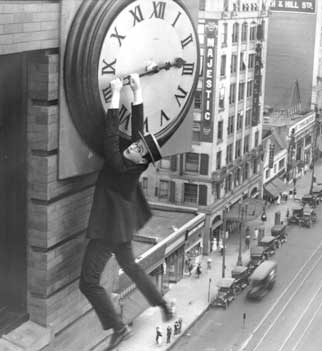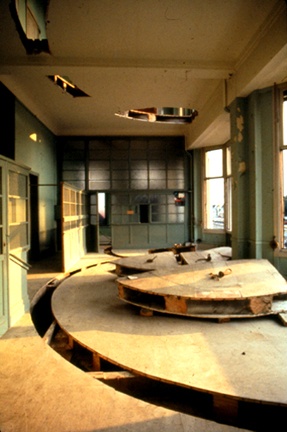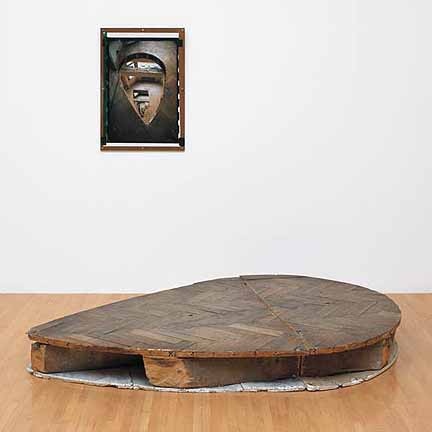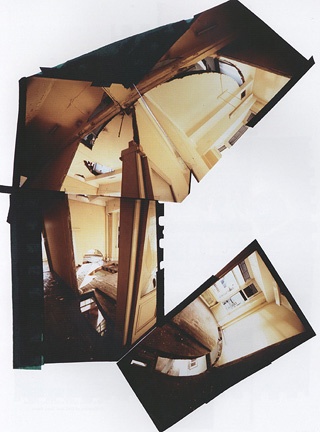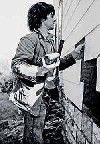Gordon Matta-Clark at the Whitney
Documents of Seminal but Lost Public Art
By: Mary Sherman - Mar 16, 2007
Gordon Matta-Clark: "You are the Measure" at the Whitney Museum of American Art, New York, through June 3; at The Museum of Contemporary Art, Los Angeles, June- September 2007.
Before there was Rirkrit Tiravanija feeding people as a kind of performance art, Matthew Barney romping around as a satyr in his Cremaster films, Krzysztof Wodiczko building shelters for the homeless or - what seems like light years away - Brice Marden parlaying money from sales of his paintings into palatial studios, there was Gordon Matta-Clark. He was the ultimate feel good artist - in the best sense of the word.
Born in 1943 to artists Roberto Matta and Anna Clark, at his father's advice he studied architecture at Cornell, but ultimately gave it up to become one of the most endlessly inventive and appealing artists of his time.
In the late '60s and early '70s, when New York was even edgier and decidedly grittier, Matta-Clark made a pushcart for selling hits of pure air (Fresh Air), jacked up abandoned cars to make shelters for the homeless (Jacks), hosted a barbeque for 500 of them (Pig Roast), and created the ultimate, pod-like tree forts for a dance troupe at Vassar College (Tree Dance).
He reached for the moon and brought it down to earth, cutting a half-moon hole in an abandoned shed at Pier 52 to create Day's End.
Matta-Clark had all the ear-markings of a great Romantic artist: Rough and tumble good looks, a run-in with the law (for that shed piercing), audacious bad-boy behavior, talent beyond compare, and the unfortunate misfortune to die tragically young (of cancer at age 35).
It doesn't matter that, given the temporality of his work, much of the sculptural works are no longer with us—and consequently few of them are in this retrospective: He recorded the making of many of the pieces, often in film, video and photography. These documentations, his notes, sketches and drawings, along with a number of sculptures (and re-creations) in the show are enough to convey Matta-Clark's infectious exuberance.
Matta-Clark's work shares much in common with the Situationalists', in particular, Guy Debord's. In 1957 Deboard wrote "Our central idea is the construction of situations, that is to say, the concrete construction of momentary ambiances of life and their transformation into a superior passional quality."
One of Matta-Clark's most memorable such performances was his climbing up the huge clock face on New York City's 14th Street and, recalling silent film star Harold Lloyd's clock stunt in the 1923 film "Safety Last", proceeding with his morning toilette (using water he piped in through the clock's tower). Another was his impish delight in arranging his beloved truck's ultimate demise: After taking it to the dump and smashing it a number of time for good measure, he then filmed its final crushing into a trash heap (Freshkill).
Matta-Clark did what many of us think might be cool, but never make happen. He opened a restaurant for all his friends, simply called Food. And his friends took turns as guest chefs. Food was a place where you could find the Pop artist Robert Rauschenberg doing the dishes just as readily as you'd find the sculptor Donald Judd serving up daily specials.
His work may not have commanded the prices that Brice Marden's do; but he, nonetheless, became a property holder, buying up micro lots from the city and, like a proud landlord, photographing every inch of them.
He made monuments - not out of marble or bronze - but out of everyday buildings. Carving the abandoned edifices up like slices of beef, he split them open, dissecting and revealing their geometry, flooding them with light, revealing new vistas, delightful rhythms and dizzying drops from one floor into another. Then like some ancient pediment, he brought the fragments into the museum, asking the same attention for these humble pieces as from a Corinthian column.
Matta-Clark understood the magic of the everyday, the incidental and seemingly inconsequential. He also commanded the genius to tease out its magnificence, opening up wondrous possibilities from the seemingly slightest of acts.
He retained a marvelously inventive and child-like curiosity about the world, instilling a sense of awe in all that he did; and he did so with the most untraditional of means—not with grand oil paintings that hang on walls, but by cutting holes in those walls, bringing life into those spaces and art into the spaces of life.
Mary Sherman is an artist. curator and critic and member of AICA the international organization of art critics. She is a founder of TransCultural Exchange which is sponsoring, in Boston, from April 27 through 29, 2007 a "Conference on International Opportunities in the Arts" For information on the upcoming event consult http://www.transculturalexchange.org/

